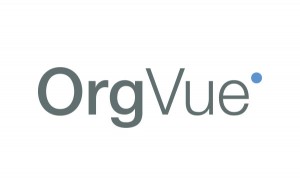It all started with a great premise: Let’s teach kids an easier way to understand math so they won’t end up hating it. We can all buy into that, right!?
What came out was a classic organizational nightmare of project-gone-wrong, in a way only HR can truly understand—the Common Core was born. Now, there you sit at the kitchen table trying to show your kid how to do basic multiplication, but you really have no clue on how to do it the “new-math” way.
In a similar way, it used to be HR and Talent Acquisition could just run some spreadsheets, make a three-color pie graph, drop it in the middle of the conference table and—BAM—our job was done.
But, not anymore! Now you’re expected to take your people analytics and make evidence-based decisions, and prove we actually know what we’re talking about, eliminating the art and “feel” of classic HR and Talent practices.
We feel your pain, and we can’t multiply the new way either. That’s why our May installment of the FOT webinar is entitled, The New HR Math: Dumbing Down HR Analytics for Everyday HR and Talent Pros. Join FOT’s Tim Sackett and Kris Dunn for this webinar (sponsored by HireVue, a company that gets predictive analytics at a whole other level), and we’ll share the following goodies with you:
– 5 HR and Talent Analytics you should stop measuring immediately! You know what looks really bad to your leadership? When HR is using the old math, and everyone else is using the new math!
– 5 HR and Talent Analytics you should start measuring immediately! Don’t be that parent fighting the good fight, ostracizing your kid from society by not allowing them to use the new math skills! We have the new cool measures you really need to be using in HR and recruiting today.
– 3 Best Practices every HR and Talent Acquisition shop can do right now with their analytics. You now know what the numbers are, but what the heck are you supposed to do with them? Fear not, Tim and Kris watched every YouTube video possible on the new math, they can show you the way!
– A primer on what’s next once you start using these Predictive Analytics. Since you specialize in people, you naturally understand the move to using analytics that helps you predict the future is only half the battle—you have to have a plan once the predictions are made. We’ll help you understand the natural applications for using your predictive analytical data as both a hammer and a hug—to get people who need to change moving, and to embrace those that truly want your help as a partner.
You’re a quality HR pro who knows how to get things done. Join us May 27th at 2pm EST for The New HR Math: Dumbing Down HR Analytics for Everyday HR and Talent Pros, and we’ll help you understand how to deploy the “new-math” principles in HR that allow you to use predictive analytics to position yourself as the expert you are.

 orkforce Planning together in a single product. Gartner named them the ‘Cool’ product of 2014, and ‘Cool’ is an understatement!
orkforce Planning together in a single product. Gartner named them the ‘Cool’ product of 2014, and ‘Cool’ is an understatement!